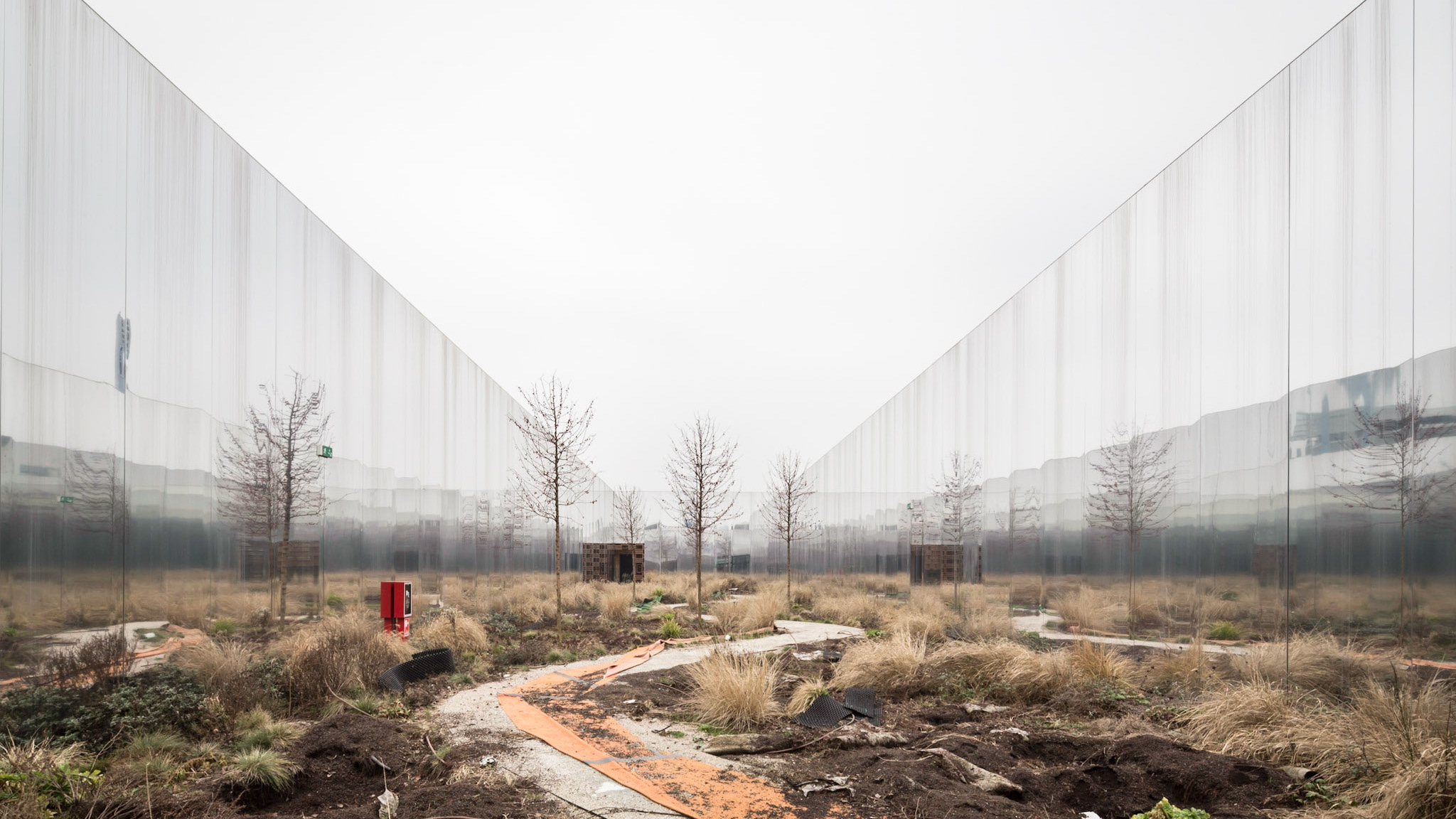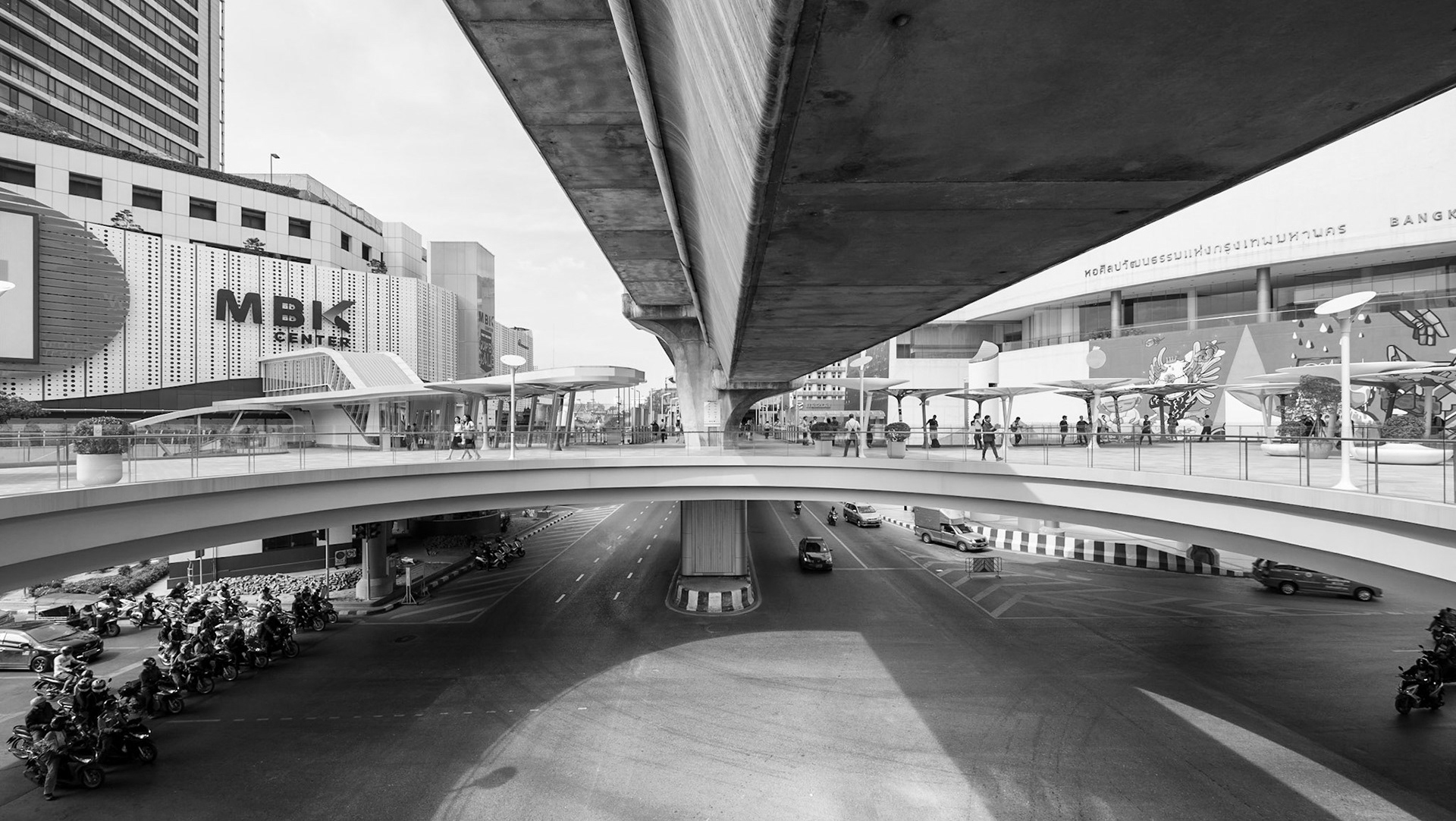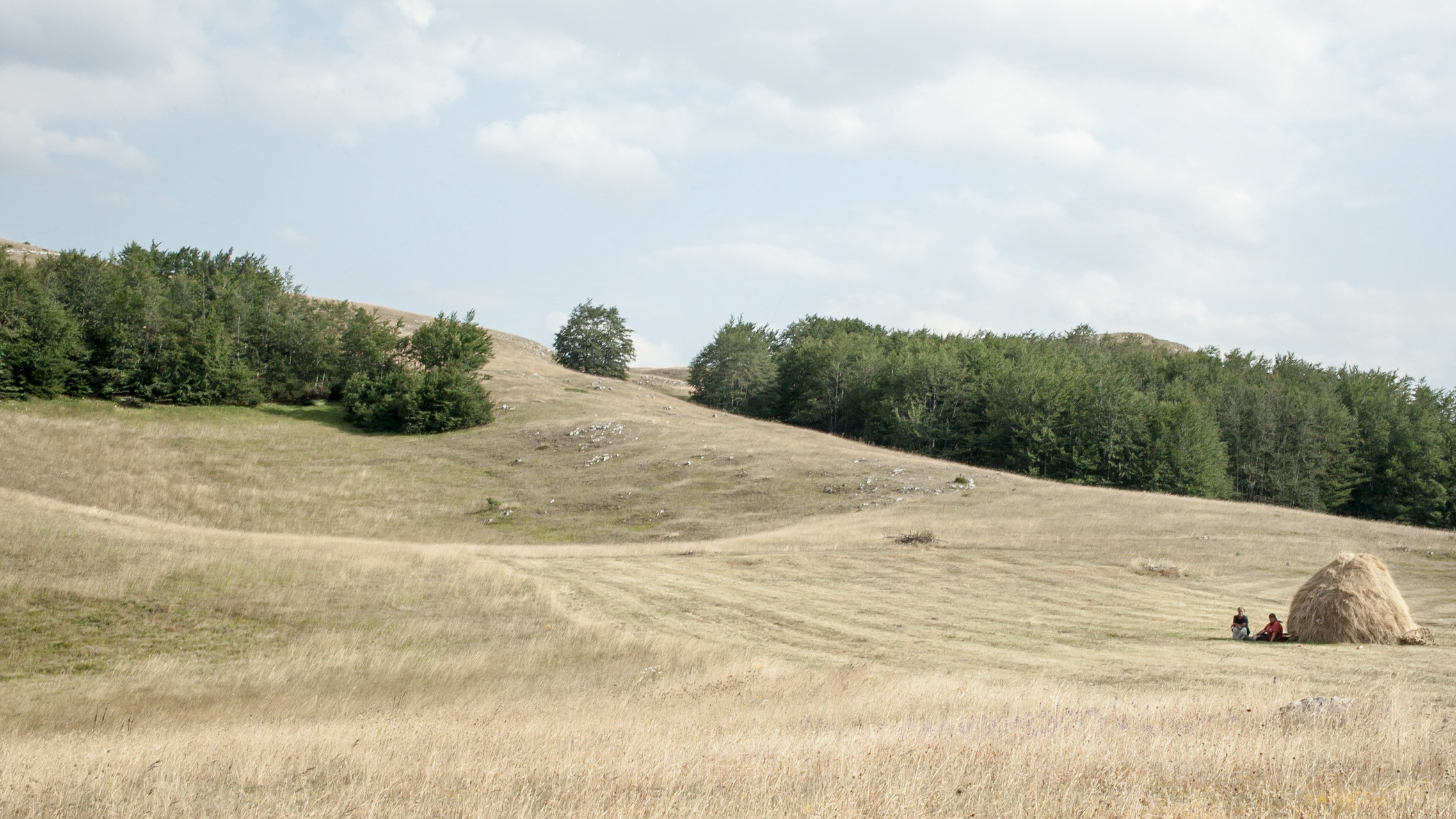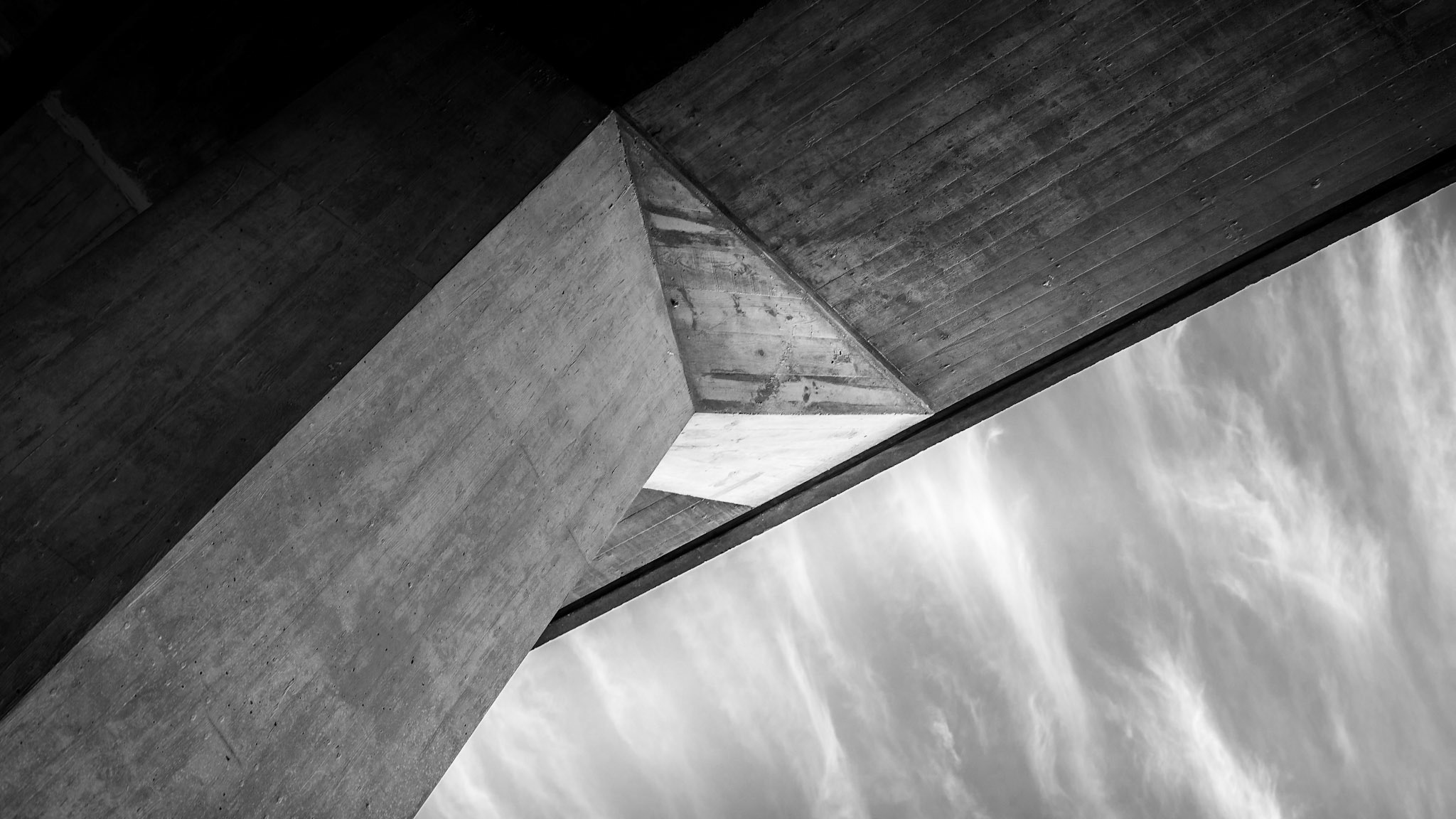Roças of São Tomé and Principe: an [almost] lost treasure
![Roças of São Tomé and Principe: an [almost] lost treasure](https://cdn.myportfolio.com/08b9c230-ec87-4653-9b86-8d48cf01e561/b08dec45-a43b-4dd2-ae9b-411b1f53dd54_rw_1920.jpg?h=eda456b7e3f7696ba6c0f7a4f157d9e1)
Roças of São Tomé and Principe: an [almost] lost treasure
![Roças of São Tomé and Principe: an [almost] lost treasure](https://cdn.myportfolio.com/08b9c230-ec87-4653-9b86-8d48cf01e561/98353d6c-e9e4-4cff-98a5-0b93839609e9_rw_1920.jpg?h=6d9590e8d3cdf7096dad661a7db91f05)
Roças of São Tomé and Principe: an [almost] lost treasure
![Roças of São Tomé and Principe: an [almost] lost treasure](https://cdn.myportfolio.com/08b9c230-ec87-4653-9b86-8d48cf01e561/0a12c3ad-84fb-48fc-ae12-665ca107f2b9_rw_1920.jpg?h=95535bcbeaaff1b0f20d4a55d357ce41)
Roças of São Tomé and Principe: an [almost] lost treasure
![Roças of São Tomé and Principe: an [almost] lost treasure](https://cdn.myportfolio.com/08b9c230-ec87-4653-9b86-8d48cf01e561/70abfcbb-dcae-433e-85a1-11a7ad61e0c2_rw_1920.jpg?h=8695eccbe4d51782e0942a43559267f4)
Roças of São Tomé and Principe: an [almost] lost treasure
![Roças of São Tomé and Principe: an [almost] lost treasure](https://cdn.myportfolio.com/08b9c230-ec87-4653-9b86-8d48cf01e561/76624b16-0422-4169-8b4c-4904b2db8af9_rw_1920.jpg?h=d32db04435eb52d46ea151b2b2a24fb1)
Roças of São Tomé and Principe: an [almost] lost treasure
![Roças of São Tomé and Principe: an [almost] lost treasure](https://cdn.myportfolio.com/08b9c230-ec87-4653-9b86-8d48cf01e561/f9c451bc-3b1a-4106-9f56-706afa0a64f1_rw_1920.jpg?h=a2cf1fda40e7cf46b4dadbf1ffe47ea2)
Roças of São Tomé and Principe: an [almost] lost treasure
![Roças of São Tomé and Principe: an [almost] lost treasure](https://cdn.myportfolio.com/08b9c230-ec87-4653-9b86-8d48cf01e561/16bb92f5-576c-41f5-9c4d-442418d2f30c_rw_1920.jpg?h=3ca0342ab4252a572a6298492316098c)
Roças of São Tomé and Principe: an [almost] lost treasure
![Roças of São Tomé and Principe: an [almost] lost treasure](https://cdn.myportfolio.com/08b9c230-ec87-4653-9b86-8d48cf01e561/80fddef9-259c-4bc1-9433-6a1b6d26ce01_rw_1920.jpg?h=ac5bb327656876abdac74d19d27c8af7)
Roças of São Tomé and Principe: an [almost] lost treasure
![Roças of São Tomé and Principe: an [almost] lost treasure](https://cdn.myportfolio.com/08b9c230-ec87-4653-9b86-8d48cf01e561/2b9b8606-b3a3-4afe-92aa-e92d84eeb324_rw_1920.jpg?h=0c0292269a64777902198c2179d0d81c)
Roças of São Tomé and Principe: an [almost] lost treasure
![Roças of São Tomé and Principe: an [almost] lost treasure](https://cdn.myportfolio.com/08b9c230-ec87-4653-9b86-8d48cf01e561/baafd3ea-32ab-4fad-93f0-6417ea6b9bbf_rw_1920.jpg?h=4393a0645ed39217a7b8f14f492327e4)
Roças of São Tomé and Principe: an [almost] lost treasure
![Roças of São Tomé and Principe: an [almost] lost treasure](https://cdn.myportfolio.com/08b9c230-ec87-4653-9b86-8d48cf01e561/e49870bd-a638-4b33-a6e2-a531409bda92_rw_1920.jpg?h=4b07e2896ce43029d8175f6404c0509c)
Roças of São Tomé and Principe: an [almost] lost treasure
![Roças of São Tomé and Principe: an [almost] lost treasure](https://cdn.myportfolio.com/08b9c230-ec87-4653-9b86-8d48cf01e561/e4016712-757e-4351-9bf8-ae787d5f79e5_rw_1920.jpg?h=c1c53e88a0a5fa8ec2243cedeebdde1c)
Roças of São Tomé and Principe: an [almost] lost treasure
![Roças of São Tomé and Principe: an [almost] lost treasure](https://cdn.myportfolio.com/08b9c230-ec87-4653-9b86-8d48cf01e561/c90d34db-7887-426d-8410-c84427a02eec_rw_1920.jpg?h=352d059a62f14087a7b547d9695ce7d8)
Roças of São Tomé and Principe: an [almost] lost treasure
![Roças of São Tomé and Principe: an [almost] lost treasure](https://cdn.myportfolio.com/08b9c230-ec87-4653-9b86-8d48cf01e561/db860ee2-9331-4bb1-83bc-1add5640784e_rw_1920.jpg?h=1b80ce55ed93906c8f58067560c1f673)
Roças of São Tomé and Principe: an [almost] lost treasure
![Roças of São Tomé and Principe: an [almost] lost treasure](https://cdn.myportfolio.com/08b9c230-ec87-4653-9b86-8d48cf01e561/4b2d2a71-30e3-4054-8f50-6557ee965d2b_rw_1920.jpg?h=f023306e3c9a0dd2f96cb67a9c9fd5f0)
Roças of São Tomé and Principe: an [almost] lost treasure
![Roças of São Tomé and Principe: an [almost] lost treasure](https://cdn.myportfolio.com/08b9c230-ec87-4653-9b86-8d48cf01e561/0a681faf-a08a-45fd-a731-abbcd715feca_rw_1920.jpg?h=267e994e8623d11fe8b921a17131795a)
Roças of São Tomé and Principe: an [almost] lost treasure
![Roças of São Tomé and Principe: an [almost] lost treasure](https://cdn.myportfolio.com/08b9c230-ec87-4653-9b86-8d48cf01e561/75807aa6-afa4-49de-af65-f9a6db4bcdfc_rw_1920.jpg?h=e89ceebb84b1e2d8df41cf92cd020bfe)
Roças of São Tomé and Principe: an [almost] lost treasure
![Roças of São Tomé and Principe: an [almost] lost treasure](https://cdn.myportfolio.com/08b9c230-ec87-4653-9b86-8d48cf01e561/d3da9c1e-32f5-4145-8308-f55406b2b048_rw_1920.jpg?h=86af3004a6e2b5f9d1ee77177b8bbc05)
Roças of São Tomé and Principe: an [almost] lost treasure
![Roças of São Tomé and Principe: an [almost] lost treasure](https://cdn.myportfolio.com/08b9c230-ec87-4653-9b86-8d48cf01e561/2b260b9a-d96e-413b-a2f4-e6906476a3f9_rw_1920.jpg?h=0645ab9ecd1310ec3be71d1607aab90b)
Roças of São Tomé and Principe: an [almost] lost treasure
![Roças of São Tomé and Principe: an [almost] lost treasure](https://cdn.myportfolio.com/08b9c230-ec87-4653-9b86-8d48cf01e561/8000d58a-81e7-4452-a730-ad7c67ee9c4e_rw_1920.jpg?h=01ff80063981cd48f94ba90c31398d84)
Roças of São Tomé and Principe: an [almost] lost treasure
![Roças of São Tomé and Principe: an [almost] lost treasure](https://cdn.myportfolio.com/08b9c230-ec87-4653-9b86-8d48cf01e561/7de177d7-03dd-4f0e-bec0-49abd4380ff4_rw_1920.jpg?h=ba0d8a7b83712e936653ddce68c1cd8d)
Roças of São Tomé and Principe: an [almost] lost treasure
![Roças of São Tomé and Principe: an [almost] lost treasure](https://cdn.myportfolio.com/08b9c230-ec87-4653-9b86-8d48cf01e561/f2e56d7e-b25d-45f5-a342-429ce85405cb_rw_1920.jpg?h=c9e7e67b35a42ef255714d22195bc6ea)
Roças of São Tomé and Principe: an [almost] lost treasure
![Roças of São Tomé and Principe: an [almost] lost treasure](https://cdn.myportfolio.com/08b9c230-ec87-4653-9b86-8d48cf01e561/ec2bf0b0-447f-4fee-a20f-79c1724c0059_rw_1920.jpg?h=7b44296aa730fba85bf54a116c197de1)
Roças of São Tomé and Principe: an [almost] lost treasure
![Roças of São Tomé and Principe: an [almost] lost treasure](https://cdn.myportfolio.com/08b9c230-ec87-4653-9b86-8d48cf01e561/b7de6bfa-ad27-4716-b30d-1d621a2392ad_rw_1920.jpg?h=ae1c059cc990ac7d78301a5f6481d0a7)
Roças of São Tomé and Principe: an [almost] lost treasure
![Roças of São Tomé and Principe: an [almost] lost treasure](https://cdn.myportfolio.com/08b9c230-ec87-4653-9b86-8d48cf01e561/8342fcfc-56c0-47b1-897b-8128fe64699b_rw_1920.jpg?h=10d7e3f3716d3043c17337e6f868efb1)
Roças of São Tomé and Principe: an [almost] lost treasure
![Roças of São Tomé and Principe: an [almost] lost treasure](https://cdn.myportfolio.com/08b9c230-ec87-4653-9b86-8d48cf01e561/b90eb560-6982-4bdb-a77a-4f92853b5917_rw_1920.jpg?h=d56e82d23abc080d7ff79668233ba88e)
Roças of São Tomé and Principe: an [almost] lost treasure
![Roças of São Tomé and Principe: an [almost] lost treasure](https://cdn.myportfolio.com/08b9c230-ec87-4653-9b86-8d48cf01e561/6a8c50fe-759f-4a89-9404-f2b578a4bcc8_rw_1920.jpg?h=3d6d91c819ba725171243627a0831e8e)
Roças of São Tomé and Principe: an [almost] lost treasure
![Roças of São Tomé and Principe: an [almost] lost treasure](https://cdn.myportfolio.com/08b9c230-ec87-4653-9b86-8d48cf01e561/7c78751b-d123-4a05-a642-d285cfc30d3a_rw_1920.jpg?h=7ccc6a8a3c88aa4fe6ba9528d32297b1)
Roças of São Tomé and Principe: an [almost] lost treasure
![Roças of São Tomé and Principe: an [almost] lost treasure](https://cdn.myportfolio.com/08b9c230-ec87-4653-9b86-8d48cf01e561/aa46e35d-9123-4101-9424-9eb7ee9f8f3c_rw_1920.jpg?h=37aaf45d14cba0989043add9f296bb64)
Roças of São Tomé and Principe: an [almost] lost treasure
![Roças of São Tomé and Principe: an [almost] lost treasure](https://cdn.myportfolio.com/08b9c230-ec87-4653-9b86-8d48cf01e561/bf507238-3f2e-4ed4-ba20-74e952541f7f_rw_1920.jpg?h=50a05b2480babecb6b32e440ac9faf46)
Roças of São Tomé and Principe: an [almost] lost treasure
![Roças of São Tomé and Principe: an [almost] lost treasure](https://cdn.myportfolio.com/08b9c230-ec87-4653-9b86-8d48cf01e561/19f5db50-daf7-46da-a312-0be02121bf48_rw_1920.jpg?h=f21bde47a48e19f7525bd0e5af5d2685)
Roças of São Tomé and Principe: an [almost] lost treasure
![Roças of São Tomé and Principe: an [almost] lost treasure](https://cdn.myportfolio.com/08b9c230-ec87-4653-9b86-8d48cf01e561/cd4faf98-233a-4a80-9c8f-95fbe6275ad4_rw_1920.jpg?h=920cde5c167c54dd8b21eb78a31f35e5)
Roças of São Tomé and Principe: an [almost] lost treasure
![Roças of São Tomé and Principe: an [almost] lost treasure](https://cdn.myportfolio.com/08b9c230-ec87-4653-9b86-8d48cf01e561/81091499-c0f2-4077-86dd-23288306f71e_rw_1920.jpg?h=7e09d3dfdbfada9f8d486b1e5ccba86b)
Roças of São Tomé and Principe: an [almost] lost treasure
![Roças of São Tomé and Principe: an [almost] lost treasure](https://cdn.myportfolio.com/08b9c230-ec87-4653-9b86-8d48cf01e561/f3f975c6-688b-4ccf-abf2-2b9bc28af053_rw_1920.jpg?h=6502480c624653ebaf1d88192ae1305d)
Roças of São Tomé and Principe: an [almost] lost treasure
![Roças of São Tomé and Principe: an [almost] lost treasure](https://cdn.myportfolio.com/08b9c230-ec87-4653-9b86-8d48cf01e561/93e0df46-0954-4c1d-8ee7-acc8c148bbc8_rw_1920.jpg?h=3ed5126bc70e9e72dee5afa41e5ae2a6)
Roças of São Tomé and Principe: an [almost] lost treasure
![Roças of São Tomé and Principe: an [almost] lost treasure](https://cdn.myportfolio.com/08b9c230-ec87-4653-9b86-8d48cf01e561/2437185d-a4ce-4b1a-93c4-abd0aeb6c30c_rw_1920.jpg?h=15a9906433174f77547c285dac62f041)
Roças of São Tomé and Principe: an [almost] lost treasure
![Roças of São Tomé and Principe: an [almost] lost treasure](https://cdn.myportfolio.com/08b9c230-ec87-4653-9b86-8d48cf01e561/9f8dab62-5755-41a6-94ba-1033b481866e_rw_1920.jpg?h=4fd63f70411f77de5645a6ec77d2e92a)
Roças of São Tomé and Principe: an [almost] lost treasure
![Roças of São Tomé and Principe: an [almost] lost treasure](https://cdn.myportfolio.com/08b9c230-ec87-4653-9b86-8d48cf01e561/b617fc22-87c3-4351-b2b3-3b789709a264_rw_1920.jpg?h=cef026174eecf050991b55e291b30e7e)
Roças of São Tomé and Principe: an [almost] lost treasure
![Roças of São Tomé and Principe: an [almost] lost treasure](https://cdn.myportfolio.com/08b9c230-ec87-4653-9b86-8d48cf01e561/0d47ff5d-e1ad-470d-b2aa-17eeac014926_rw_1920.jpg?h=2c5a63de7dd74c3278919361953b718e)
Roças of São Tomé and Principe: an [almost] lost treasure
![Roças of São Tomé and Principe: an [almost] lost treasure](https://cdn.myportfolio.com/08b9c230-ec87-4653-9b86-8d48cf01e561/dcb5f48d-b872-4fd9-a1f9-b1abe988c79d_rw_1920.jpg?h=76013a66603014110bedc8ab1be39bc7)
Roças of São Tomé and Principe: an [almost] lost treasure
![Roças of São Tomé and Principe: an [almost] lost treasure](https://cdn.myportfolio.com/08b9c230-ec87-4653-9b86-8d48cf01e561/a2ea0d94-a628-4442-84cb-8eef9d11e024_rw_1920.jpg?h=23f39a3c31b4bfe34e422afec1e38219)
Roças of São Tomé and Principe: an [almost] lost treasure
![Roças of São Tomé and Principe: an [almost] lost treasure](https://cdn.myportfolio.com/08b9c230-ec87-4653-9b86-8d48cf01e561/06a0890a-3fa0-462a-a62c-67d7eb795ce0_rw_1920.jpg?h=756dd36fb0aca076c29d828d11f9f8e4)
Roças of São Tomé and Principe: an [almost] lost treasure
![Roças of São Tomé and Principe: an [almost] lost treasure](https://cdn.myportfolio.com/08b9c230-ec87-4653-9b86-8d48cf01e561/ec3ccb9a-e26b-4fb5-af9c-d12ce2b055a6_rw_1920.jpg?h=12b355c92e23084c4371bfbc234b781b)
Roças of São Tomé and Principe: an [almost] lost treasure
![Roças of São Tomé and Principe: an [almost] lost treasure](https://cdn.myportfolio.com/08b9c230-ec87-4653-9b86-8d48cf01e561/53ef5cbb-0bdf-4792-97e1-95766df42b36_rw_1920.jpg?h=364f30442b3d6445cdb1336685ba7377)
Roças of São Tomé and Principe: an [almost] lost treasure
![Roças of São Tomé and Principe: an [almost] lost treasure](https://cdn.myportfolio.com/08b9c230-ec87-4653-9b86-8d48cf01e561/01ad92b8-17b1-47aa-b6e3-30706fdd80f3_rw_1920.jpg?h=7caece316ce1fa0e652c60e697f24845)
Roças of São Tomé and Principe: an [almost] lost treasure
![Roças of São Tomé and Principe: an [almost] lost treasure](https://cdn.myportfolio.com/08b9c230-ec87-4653-9b86-8d48cf01e561/19a9f574-b1ea-40b2-bf12-08fc5e31ca0f_rw_1920.jpg?h=97925d0a1378df805c6512a0c545addb)
Roças of São Tomé and Principe: an [almost] lost treasure
![Roças of São Tomé and Principe: an [almost] lost treasure](https://cdn.myportfolio.com/08b9c230-ec87-4653-9b86-8d48cf01e561/0b1fabc7-d9f6-49c7-8705-1275cac4dc7f_rw_1920.jpg?h=fd60cfaf9afd6ac6d681d1f34963f177)
Roças of São Tomé and Principe: an [almost] lost treasure
![Roças of São Tomé and Principe: an [almost] lost treasure](https://cdn.myportfolio.com/08b9c230-ec87-4653-9b86-8d48cf01e561/ee6e1d59-6f2c-4867-b864-264024bc3941_rw_1920.jpg?h=f561b8de722d0dd6991f353d198f61b4)
Roças of São Tomé and Principe: an [almost] lost treasure
![Roças of São Tomé and Principe: an [almost] lost treasure](https://cdn.myportfolio.com/08b9c230-ec87-4653-9b86-8d48cf01e561/80a96161-89a4-4ff6-85d7-7baa31ed8bbe_rw_1920.jpg?h=46dd5ce05d17b368b4a309c64fdcd3c6)
Roças of São Tomé and Principe: an [almost] lost treasure
![Roças of São Tomé and Principe: an [almost] lost treasure](https://cdn.myportfolio.com/08b9c230-ec87-4653-9b86-8d48cf01e561/e1770394-d79b-4671-8929-7ba28fe22d0f_rw_1920.jpg?h=998aab6df32bb2157e37c82e8d658265)
Roças of São Tomé and Principe: an [almost] lost treasure
![Roças of São Tomé and Principe: an [almost] lost treasure](https://cdn.myportfolio.com/08b9c230-ec87-4653-9b86-8d48cf01e561/a63c445b-fcb6-4042-ac1b-6d00272c992a_rw_1920.jpg?h=63bf91865b2357348432d83d114835a2)
Roças of São Tomé and Principe: an [almost] lost treasure
![Roças of São Tomé and Principe: an [almost] lost treasure](https://cdn.myportfolio.com/08b9c230-ec87-4653-9b86-8d48cf01e561/b3d69b5d-fa7d-4665-8d33-7c932b3b650a_rw_1920.jpg?h=cbc06183f39a5cc13e588c698a66dc7c)
Roças of São Tomé and Principe: an [almost] lost treasure
![Roças of São Tomé and Principe: an [almost] lost treasure](https://cdn.myportfolio.com/08b9c230-ec87-4653-9b86-8d48cf01e561/9eb2df9d-3a7f-4255-b534-6548ee4d02cf_rw_1920.jpg?h=6f6ed336bc00fec6363cc399d058dbcc)
Roças of São Tomé and Principe: an [almost] lost treasure
![Roças of São Tomé and Principe: an [almost] lost treasure](https://cdn.myportfolio.com/08b9c230-ec87-4653-9b86-8d48cf01e561/0b11e6be-ce8e-4a57-8d86-2c98ee872885_rw_1920.jpg?h=71a7c971895cb09185fbb5c6693c1b0d)
Roças of São Tomé and Principe: an [almost] lost treasure
![Roças of São Tomé and Principe: an [almost] lost treasure](https://cdn.myportfolio.com/08b9c230-ec87-4653-9b86-8d48cf01e561/002461e5-bf74-4a8c-b05e-1091db0a62ed_rw_1920.jpg?h=e06846e58b73872832b3148fa60ac19b)
Roças of São Tomé and Principe: an [almost] lost treasure
![Roças of São Tomé and Principe: an [almost] lost treasure](https://cdn.myportfolio.com/08b9c230-ec87-4653-9b86-8d48cf01e561/cccf559b-867d-4569-9afc-ff363f9fe728_rw_1920.jpg?h=4cbdc6b0d75a2b64aa03b8d07b7e22c1)
Roças of São Tomé and Principe: an [almost] lost treasure
![Roças of São Tomé and Principe: an [almost] lost treasure](https://cdn.myportfolio.com/08b9c230-ec87-4653-9b86-8d48cf01e561/d4c5dd79-2198-4f54-beb6-cfdd7c4b9c6b_rw_1920.jpg?h=aca3981f4b1faa179d6f3737399f7235)
Roças of São Tomé and Principe: an [almost] lost treasure
![Roças of São Tomé and Principe: an [almost] lost treasure](https://cdn.myportfolio.com/08b9c230-ec87-4653-9b86-8d48cf01e561/22db52b8-0212-4260-a5e1-789cf9216401_rw_1920.jpg?h=377aa85fa0d50e02b09c884b7870cc9b)
Roças of São Tomé and Principe: an [almost] lost treasure
Awards and exhibitions:
- First prize Enaire Award. The photo "Agua Izé" is part of Enaire public collection
- Exhibition at PhotoEspaña, Instituto Cervantes, Madrid
- Exhibition at Fundación Vila Casas, Torroella de Montgrí
- Mention Architekturbild, Germania
- Exhibition at DAM - Deutsches Architekturmuseum, Frankfurt
- Honourable mention International Photography Awards
- Nominee Fine Art Photo Award
- El Pais
[ESP] Roças de São Tomé e Príncipe: un tesoro [casi] perdido
Descubrir São Tomé y Príncipe es como ir a una isla que no existe, tan pequeña que no aparece en los mapas, difícilmente se nota en el Golfo de Guinea, pero todos nosotros, tarde o temprano, hemos probado un pedazo de ella.
A mediados del siglo XVIII, esta tierra tropical, que se compone de dos islas situadas en el ecuador, a 300 km de la costa africana, llegó a ser el mayor productor de cacao del mundo. Traída desde Brasil, en esta isla la planta de cacao encontró su hábitat perfecto y mucha mano de obra importada a bajo precio desde Cabo Verde y del cercano continente africano.
No está claro, incluso hoy, si el archipiélago era, antes de la llegada de los colonizadores, virgen o habitado por una población local de origen angolano. Cierto es que, a partir del siglo XV, la economía de la isla se basaba principalmente en la producción de caña de azúcar y en la trata de esclavos. Durante siglos la isla funcionó como un hub de clasificación de los deportados africanos que embarcaban en los barcos de las potencias europeas para ser vendidos en sus colonias americanas.
Sólo en el siglo XIX São Tomé y Príncipe se convirtió en una rica colonia, cuando los portugueses fundaron grandes fincas para cultivar café y cacao. Esto duró hasta 1869, cuando comenzó un lento declive, después de la abolición de la esclavitud, debido a la rebelión de los trabajadores y el boicot internacional contra el "cacao esclavo" de la colonia portuguesa.
El sistema de producción resistió hasta 1975, las últimas empresas cerraron sus puertas en 1990 y, desde ese momento, estas islas han caído en el olvido. Sin embargo, queda un sorprendente patrimonio arquitectónico, llamado “roças”, un término portugués que indica el complejo sistema latifundista de explotación de tierras que cambió la historia de este pequeño país durante siglos.
Esta gran maquinaria de agricultura intensiva incluía normalmente secadores, almacenes, "senzalas" - las casas donde vivían los trabajadores - , una iglesia, una escuela y, a veces, trenes que unían las sucursales a las roças principales y al mar.
La casa principal, donde vivía el patrão - el terrateniente - y el hospital, dominaban todo el asentamiento desde un eje monumental o desde una posición superior de control. Ambas arquitecturas, caracterizadas por un estilo portugués y europeo, eran un símbolo de poder. Se trataba de áreas prohibidas para los trabajadores de campo que debían cumplir con un estricto ordenamiento de las horas de trabajo, someterse al patrão y a la restricción de la libertad individual ya que no podían abandonar la finca ni regresar a sus países de origen.
Existían fronteras físicas insuperables, como el acceso a la casa principal o al piso superior de los hospitales, que estaban mejor equipados y dedicados exclusivamente a los europeos. Sin embargo, son principalmente los límites psicológicos, inculcados durante siglos de dominación, que todavía aparecen en la sociedad como fantasmas y en la forma de una falta de auto-determinación y auto-organización. El pueblo de São Tomé todavía experimenta sentimientos diferentes por las roças, una mezcla de nostalgia y rencor por un pasado que ofrecía trabajo para todos, pero sin la garantía de derechos.
La arquitectura es el último símbolo tangible de este mundo y forma parte de la identidad de esta población. Las historias, contadas por los habitantes de estas comunidades, escapan el orgullo por la belleza de estas construcciones, pero también un sentimiento de impotencia y extrañeza para aquellas casas donde nunca han podido vivir. Un sentimiento latente de inferioridad y la falta de medios económicos, incluso después de las expropiaciones de los años 80, les impidió de sentir que tenían derecho de vivir allí, generando así saqueos y abandono de las roças.
La frontera impuesta entre el mundo del terrateniente y el de los trabajadores no parece haber desaparecido, ni siquiera después de la independencia de 1975. La dicotomía patrão/roças y esclavos/senzalas, ha transformado y creado una nueva frontera que es bien descrita por la expresión peyorativa "gente da roça" - personas de la roça -, que se aplica a las personas que viven en las plantaciones, que continúan a ser considerados guetos y están relegados al estrato más bajo de la sociedad.
La narración fotográfica de unas treinta roças, intenta reconstruir la memoria de estos lugares documentando la realidad actual y dando vida a este patrimonio arquitectónico que está a punto de desaparecer para siempre.
El proyecto se desarrolla en torno a dos temas: el primero se refiere a las estructuras principales de las roças, fotografiadas con largos tiempos de exposición para restablecer la idea de intocabilidad y destacar la fuerte frontera, aún perceptible hoy en día, entre la majestuosidad de estas arquitecturas y su contexto; el segundo es un retrato de la vida cotidiana de estas comunidades que, a pesar de las dificultades, siguen siendo parte activa de la historia de estos lugares.
[ITA] Roças di São Tomé e Principe: un tesoro [quasi] scomparso
Scoprire São Tomé e Principe è come partire per l’isola che non c’è, talmente piccola da non apparire sulle mappe, difficilmente la si nota nel Golfo di Guinea, eppure tutti, prima o poi, ne abbiamo assaggiato un pezzetto.
Questa terra tropicale, composta da due isole adagiate sull’equatore a 300 km dalla costa africana, arrivò ad essere, a metà del XIX secolo, il più grande produttore mondiale di cacao, una pianta importata dal Brasile che trovò qui un habitat perfetto e mano d’opera a volontà importata a basso costo da Capo Verde e dal vicino continente africano.
Ancora oggi non è chiaro se l’arcipelago, prima dell’arrivo dei colonizzatori, fosse vergine o abitato da una popolazione locale di origine angolana; certo è che, dal XV secolo, l’economia dell’isola si basò principalmente sulla produzione della canna da zucchero e sulla tratta degli schiavi. Durante secoli l’isola funzionò come hub di smistamento dei deportati africani che le navi delle potenze europee imbarcavano per poi venderli nelle loro colonie americane.
È però solo nel XIX secolo che São Tomé e Principe diventa una ricca colonia quando i portoghesi vi fondarono grandi aziende agricole per coltivare il caffè e il cacao fino a quando, dopo l’abolizione della schiavitù nel 1869, iniziò il lento declino provocato dalle ribellioni dei lavoratori e dal boicotto internazionale contro il “cacao schiavo” della colonia portoghese. Il sistema di produzione resse, fra alti e bassi, fino al 1975; le ultime aziende chiusero i battenti nel 1990, da allora l’oblio è calato su questa terra.
E’ rimasto però un sorprendente patrimonio architettonico, le cosiddette “roças”, termine portoghese che indica il complesso sistema latifondista di sfruttamento del territorio che cambiò il corso della storia di questo piccolo paese ambito durante secoli dagli imperi colonialisti.
Queste grandi macchine di coltivazione intensiva includevano vari edifici di servizio, essiccatoi, magazzini, le “senzalas” - le case dove alloggiavano i lavoratori - , una chiesa, la scuola e a volte una ferrovia che collegava le succursali alla roça madre e al mare. Alle due estremità di un asse monumentale o in una posizione sopraelevata e di controllo si trovavano la casa principale, dove viveva il padrone, e l’ospedale organizzato su più livelli.
Queste architetture, di stile portoghese ed europeo, erano il simbolo del potere, zone off limits per i lavoratori delle piantagioni che dovevano sottostare ad un'organizzazione ferrea dei turni di lavoro, alla sottomissione al patrão - padrone - e alla limitazione delle libertà personali, tra cui quella di abbandonare l’azienda agricola e tornare nella propria patria.
Esistevano frontiere fisiche invalicabili, come l’accesso alla casa principale o ai piani alti degli ospedali, meglio attrezzati e dedicati esclusivamente agli europei, ma sono soprattutto i confini psicologici, inculcati durante secoli di dominazione, che ancora oggi sembrano ritornare come fantasmi nella società sotto forma di incapacità di autodeterminazione ed autorganizzazione.
I saotomensi tutt’ora associano alle roças sentimenti discordanti, un mix di nostalgia e di odio per un passato in cui c’era lavoro per tutti ma in cui non c’erano diritti.
L'architettura è l'ultimo simbolo di questo mondo ed è parte integrante dell’identità di questa popolazione, le storie raccontate dagli abitanti di queste comunità trapelano orgoglio per la bellezza di questi manufatti, ma anche un senso di impotenza e di estraneità per delle case che non hanno mai potuto abitare. Un senso di inferiorità latente e la mancanza di mezzi hanno impedito, anche dopo le espropriazioni degli anni ‘80, che sentissero il diritto di abitarvi, permettendone così il saccheggio e l’abbandono.
Il confine imposto tra il mondo del padrone e quello dei lavoratori sembra non essere scomparso, anche dopo l'indipendenza del 1975; la dicotomia patrão / roças e schiavi / senzalas si è trasformata ed ha generato una nuova frontiera ben descritta dall’espressione dispregiativa “gente da roça” utilizzata per indicare le persone che vivono nelle piantagioni che continuano ad essere ghettizzate e relegate nello strato sociale più basso della società.
Il racconto fotografico di circa trenta roças cerca di ricostruire la memoria di questi luoghi documentando la realtà ai giorni nostri e portando alla luce questo patrimonio architettonico che è sul punto di scomparire per sempre.
Il progetto si sviluppa attorno a due temi principali: il primo sono le strutture principali delle roças, fotografate con riprese a lunga esposizione per restituirne l’idea di intoccabilità e rimarcare il netto confine, ancor oggi sensibile, tra la maestosità di queste architetture e il loro contesto; il secondo è un ritratto della vita quotidiana di queste comunità che nonostante le difficoltà continuano ad essere parte attiva della storia questi luoghi.
[ENG] Roças of São Tomé and Principe: an [almost] lost treasure
Discovering São Tomé and Principe is like going to an island that does not exist, so small that it does not appear on maps, and it is hard to notice it in the Gulf of Guinea, but all of us, sooner or later, have tasted a piece of it.
In the mid-nineteenth century, this tropical land, which is made up of two islands lying on the equator, 300 km far from the African coast, came to be the world’s largest cocoa producer. On this island, the cocoa plant found its perfect habitat and labour at will, cheaply imported from Cape Verde and the nearby African continent.
It is not clear, even today, if the archipelago was, before the arrival of the colonizers, virgin or inhabited by a local population of Angolan origin. It is true that, from the 15th century, the economy of the island was principally based on the production of sugar cane as well as on slave trade. For centuries, the island was a classification hub of the African deportees, who were embarked in the ships of the European powers in order to be sold in the American colonies.
It was only in the 18th century that Sao Tomé e Príncipe turned into a rich colony, when the Portuguese settlers founded large farms to grow coffee and cocoa. This lasted until 1869, when a slow decline began, after the abolition of slavery, due to the rebellion of workers and the international boycott against the “slave cocoa” of the Portuguese colony.
The production system resisted until 1975, the latest companies closed their doors in 1990 and, since that moment, this place has fallen into oblivion. A surprising architectural heritage, however, still remains: the “roças”. It is a Portuguese term that indicates the complex land ownership system of land exploitation that changed the history of this small country during centuries, carried out by the colonialist empires.
This large intensive farming machinery normally included dryers, warehouses, “senzalas” —the houses where the workers lived—, a church, a school and, sometimes, a railway that connected the branches to the main “roça” and the sea.
The main house, where the patrão —the landlord— lived, and the hospital, dominated the whole settlement from the end of a monumental axis or from an upper position of control. Both architectures, characterized by Portuguese and European style, were a symbol of power. They were off-limits areas for the workers of the fields, who had to comply with a strict arrangement of the working hours and to submit to the patrão as well as to a restriction of individual freedom, they couldn’t abandon the farm or return to their homeland.
There were insurmountable physical borders such as the access to the main house or to the upper floor of the hospitals, which were better equipped and exclusively dedicated to Europeans, but it is mainly the psychological boundaries, instilled during centuries of domination, which still seem to return to society as ghosts and in the shape of a lack of self-determination and self-organisation. The people of São Tomé still experience different feelings for the roças, a mix of nostalgia and hatred for a past that offered work for everyone, but no guarantee of rights.
The architecture is the last tangible symbol of this world and it is part of the identity of this population. The stories told by the inhabitants of these communities, leak pride about the beauty of these constructions, but they have also a feeling of impotence and oddness for those houses where they would never live. A latent feeling of inferiority and a lack of economic means, even after the expropriations during the ‘80s, impeded them from feeling they had any right to live there. This perception allowed the lootings and, thus, the abandon of the roças.
The imposed border between the world of the master and the one of the workers does not seem to have disappeared, even after the 1975 independence. The dichotomy patrão/ roças and slaves / senzalas, has transformed and created a new frontier that is well described by the pejorative expression “gente da roça” —people from the roça—, which applied to the people living in the plantations, who are still ghettoized and relegated to the lowest social stratum of society.
The photographic narration of about thirty roças, tries to rebuild the memory of these places by documenting the current reality and bringing to life this architectural heritage that is about to disappear forever.
The project is carried out around two themes: the first is about the main structures of the roças, photographed with long exposure times in order to restore the idea of untouchability and to emphasize the strong border, noticeable even nowadays, between the majesty of these architectures and their context; the second is a portrait of these communities’ daily life, that, despite the difficulties, still are an active part of these places’ history.







